
Parc des Amazones
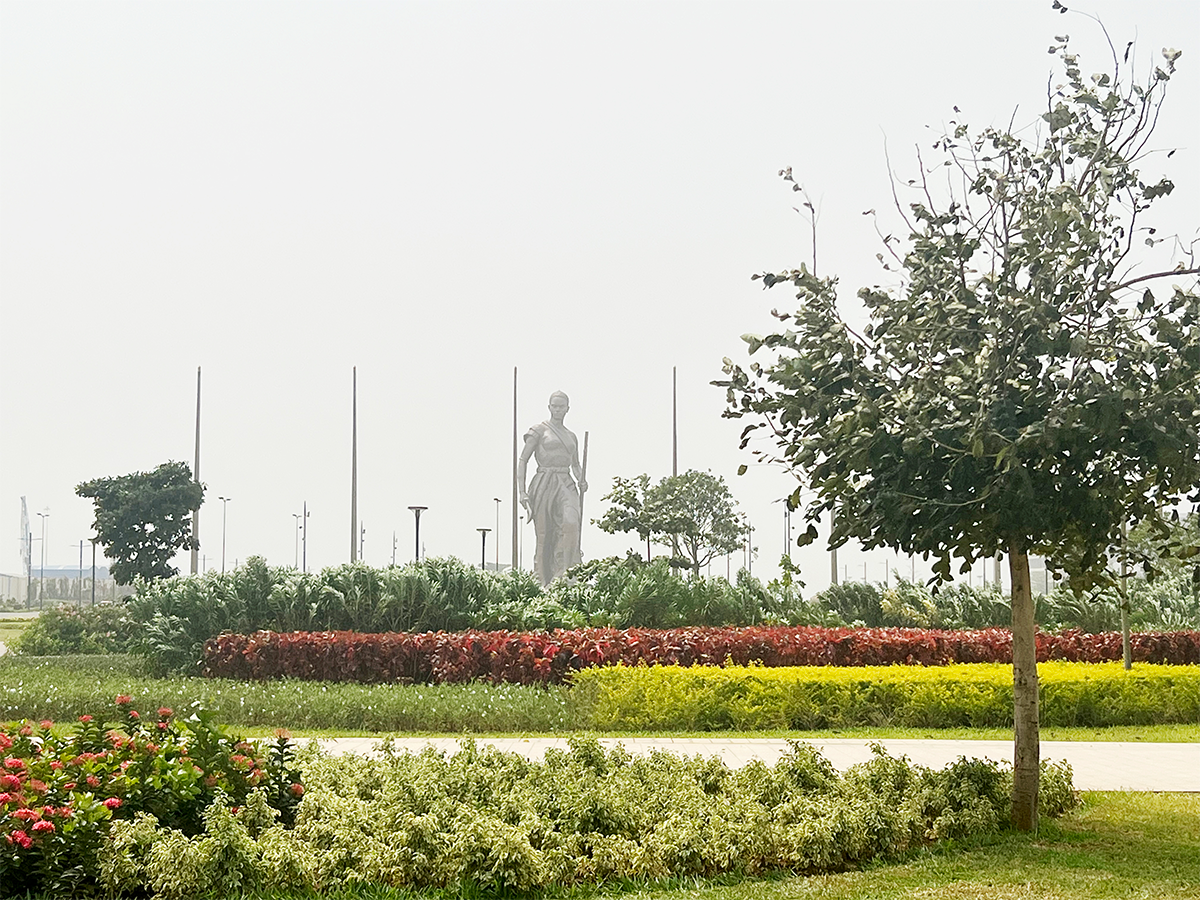
In honor of the 60th anniversary of independence, the “Parc des Amazones” in Cotonou, Benin, has been renovated. The area holds a representative character due to its location between the courthouse, the ministry, the congress center, and the presidential building.
The park extends over one and a half kilometers and comprises several distinct areas from north to south. It begins with Champ de Foire Nord, characterized by an urban green ambiance on the city side, then continues through Champ de Foire Sud to reach Place de l’Independance and the Esplanade des Amazones – an open area designated for events. Finally, it transitions into a more natural park area towards the sea. A tall wall adorned with bougainvillea protects the southeast side from the harbor expansion. The existing park originally boasted some beautiful trees, which have been preserved to the greatest extent possible.
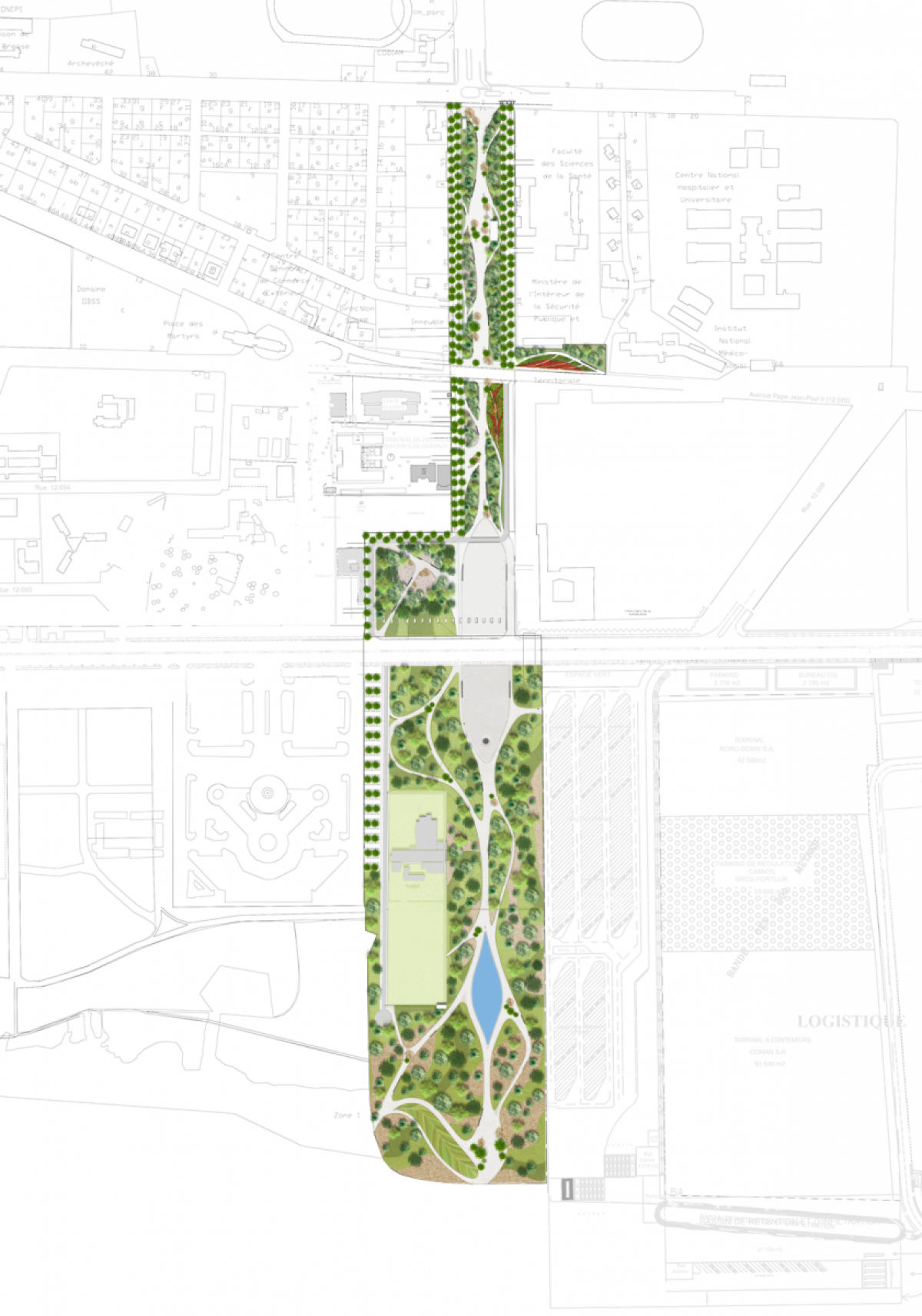


In the center of the park, on the Esplanade, stands a 30-meter-tall bronze statue of an Amazon, serving as a tribute to the Ahosi army. The statue is surrounded by a large square, paved with two-tone natural stone.
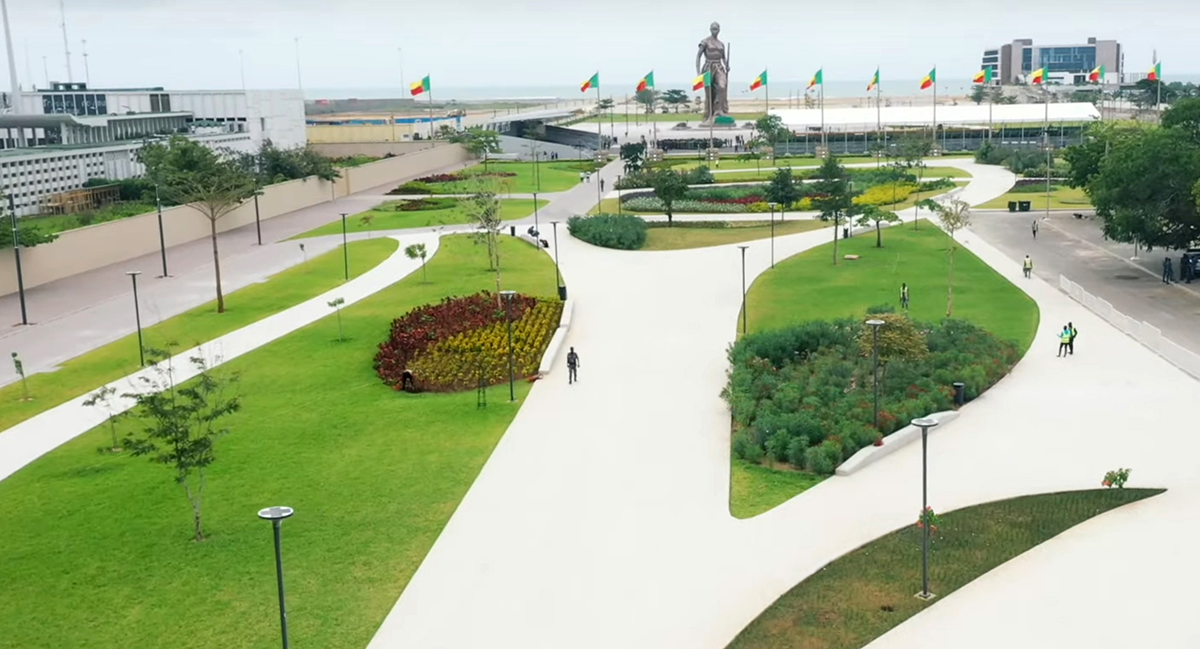
The park features a central axis that offers views of the statue from both the north and south sides. Each year, Independence Day is celebrated here, and the park’s design incorporates the logistics for this celebration. Adjacent to Place de l’Independance, there is a reinforced lawn where stands can be set up for the festivities. Furthermore, parking lots are conveniently located on both sides of Champ de Foire Nord and Champ de Foire Sud, allowing cars to park under the shade of tree-lined avenues.
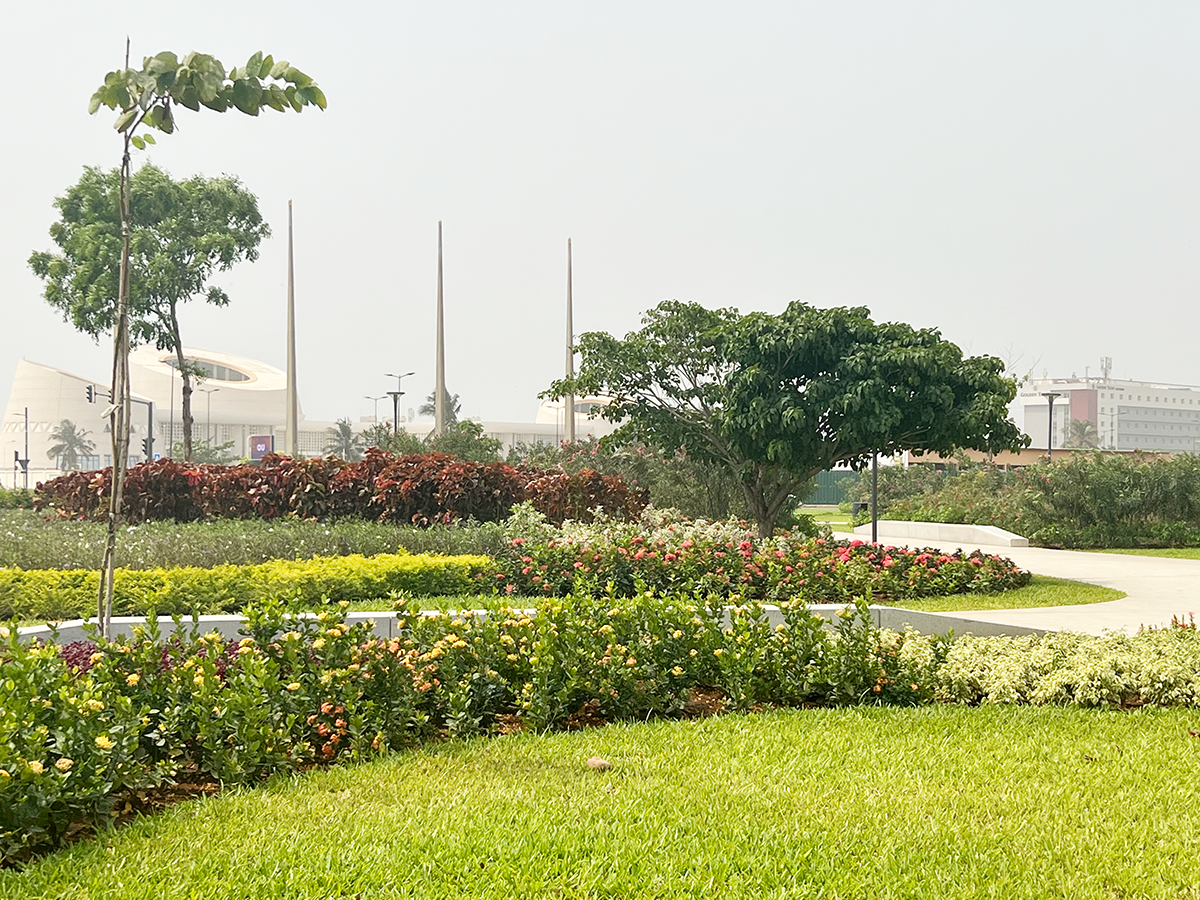
Due to Benin’s subtropical climate, where temperatures typically reach 32 degrees Celsius and rainy seasons occur, water management became a crucial aspect of the design. The drainage system is carefully planned through the grass and plant beds to maximize rainwater infiltration and retention, effectively preventing salinization of soil. Uncontrolled groundwater pumping for irrigation would increase the risk of saltwater intrusion and degradation of groundwater quality.
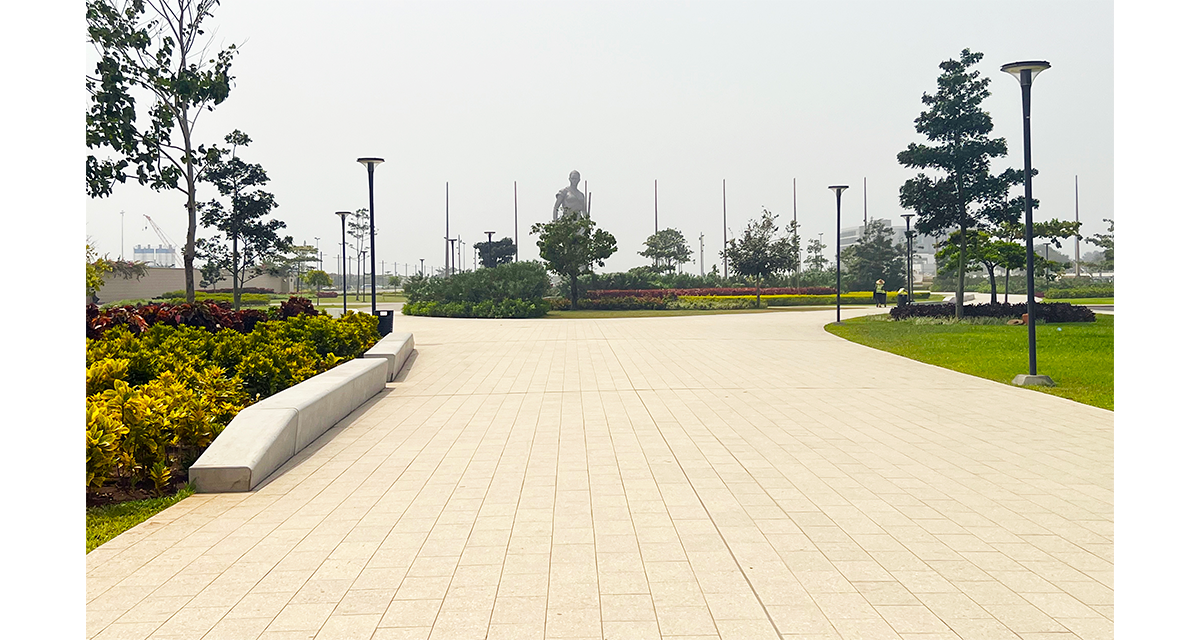
The central axis and the stately square form the formal sections of the park, while the remaining areas are more informal, inviting visitors to stroll around or relax on benches under the shade of the trees.

Throughout the park, meandering paths made of natural stone wind gracefully in a consistent direction. These paths are adorned with long concrete benches that slope down to ground level at their ends, and alongside them, trees are thoughtfully planted to offer refreshing shade. The park boasts an array of indigenous tree species, including numerous flowering trees such as Delonix, Erythrina, and Spathodea. Additionally, the plant beds here always consist of a single type of low vegetation.

Within the park lies a distinctive garden positioned near the intersection on the northern side, in close proximity to the presidential area, where the fences have an open design, providing a welcoming appearance. This garden serves as an interactive space, facilitating a harmonious connection between the two areas.
At the entrance of the courthouse, a square made of natural stone has been constructed, adorned with purple-flowering Jacaranda trees.
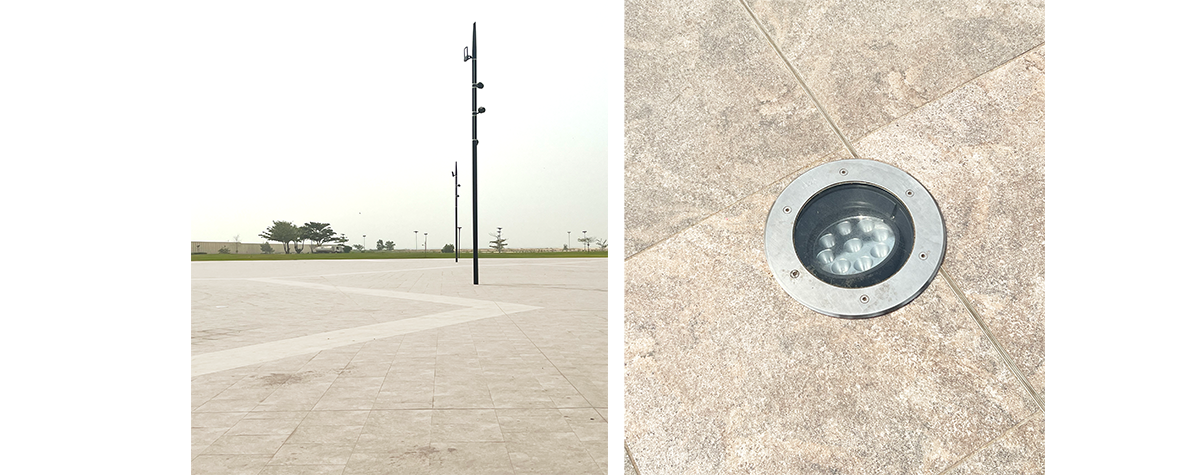
The implementation of solar-powered lighting significantly contributes to reducing energy consumption. The solar panels are skillfully integrated into the masts or fixtures, ensuring an aesthetically pleasing appearance. Three types of masts are used in the park: a 12-meter-high mast in the square, 8-meter-high masts along the roads, and 4-meter-high masts lining the sidewalks. Furthermore, the Amazone statue is brilliantly illuminated by ground spotlights.

The lighting fixtures and waste bins are designed in elegant anthracite color to maintain a timeless aesthetic. Additionally, the existing flagpoles have been preserved and thoughtfully renovated.
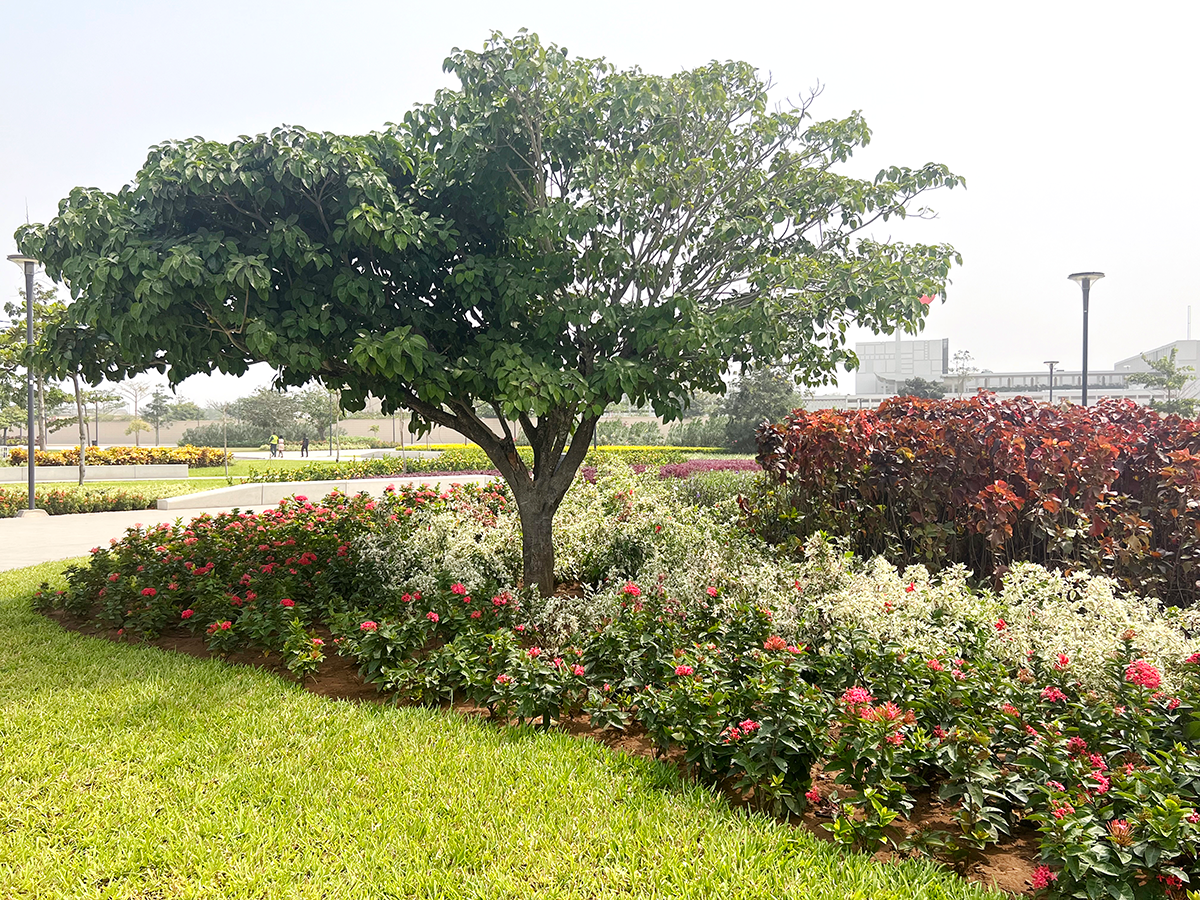

The Parc des Amazones stands as Cotonou’s first city park of such quality. However, its realization was not without challenges. The scarcity of local building materials and plants, and the substantial expenses of importing materials from abroad posed significant obstacles. Cotonou is experiencing rapid development, yet its public spaces are predominantly paved, lacking green areas and programs for the citizens. This project shows that continuous urban transformation and urban expansion should focus on making Cotonou resilient to climate threats.
| location | Cotonou, Benin |
| design | 2019 |
| realisation | 2022 |
| client | Ministère du Cadre de Vie et du Développement Durable, Bénin |
| in collaboration with | Rod’or Advies |